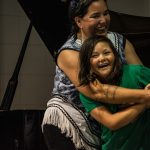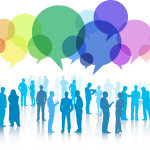By Daniella Naumovski
LESSON TITLE:
Appropriate Terminology/Vocabulary when Discussing Indigenous People(s) in the Canadian History Classroom
TIME:
80 minutes (2 class periods)
EXPECTATIONS:
- Understand the significance of learning about Indigenous vocabulary and why we do it (its purpose)
- Identify the different ways in which Indigenous people would like to be referenced as or called
- Describe using the appropriate terminology the three main Indigenous groups in Canada, First Nations, Metis and Inuit, and know that they all have different beliefs and practices (non-homogenous) and that some would actually like to be called by their Indigenous nation like Mi’kmaq for example
Curriculum (Specific Expectations from the Gr. 7 Social Studies Curriculum includes):
A2. Inquiry: use the historical inquiry process to investigate perspectives of different groups on some significant events, developments, and/or issues related to the shift in power in colonial Canada from France to Britain (FOCUS ON: Historical Perspective; Historical Significance)
A2.6 communicate the results of their inquiries using appropriate vocabulary
A3.5 describe significant interactions between various individuals, groups, and institutions in Canada during this period
A3.6 identify some significant individuals and groups in Canada during this period
As cited in the First Nations, Metis and Inuit Curriculum/Resource Guide:
- “Ontario publicly funded schools have an important role to play in promoting an inclusive school climate and a learning environment in which all students, including First Nations, Métis, and Inuit students, see themselves reflected in the curriculum and in which all students have opportunities, across the Ontario curriculum, to learn about and appreciate contemporary and traditional First Nations, Métis, and Inuit cultures, histories, and perspectives. The Ontario curriculum promotes active and engaged citizenship, which includes greater awareness of the distinct place and role of Indigenous peoples in our shared heritage and in the future of Ontario” (Ministry of Education, 2016, p.3)
Reference: Ontario Ministry of Education. (2016). First Nations, Metis and Inuit Connections: Scope and Sequence of Expectations Curriculum/Resource Guide.
ASSESSMENT:
- For Learning: Students are to look at the circular diagram (see resources below) and have a discussion in a small group about what it means; they are seeking to build and establish an appropriate repertoire of language.
- As Learning: Teacher will be observing students and their interactions when they are talking about the ways they would like to be called and how Indigenous people will be called throughout the course of this history unit. The consolidation will also help teachers know whether the students have understood what has been taught and, if not, what next steps they have to take in their teaching.
PLANNING NOTES:
- In this lesson, the teacher should be prepared for teaching students appropriate terminology when discussing Indigenous people with the chart mounted on the wall and/or in a powerpoint slideshow
- This is an introductory lesson so students should have a little background knowledge from earlier grades that helps support their learning in this lesson
- Students will have an opportunity to discuss how they would like to be called and then the same process will be applied to how they reference Indigenous people(s)
- Not realistic to do all of the vocabulary of the entire unit within the first lesson
- Reflect my own positionality as teacher who is a settler and is non-Indigenous and situate myself in that sense
- Also, reinforce to students that the terminology is always changing and fluctuating so there are no terms that are absolute but these are the ones that are relevant at this moment in time
- It’s very important for teachers to pronounce the various Indigenous groups and their names correctly (ex. Anishinaabe or Annishinaabewi is how Indigenous people prefer), A-nish-i-naa-be
Terms Include:
- Appropriate: Indigenous or First Nations, Metis and Inuit and then particular First Nation like Huron, Mi’kmaq but it’s up to the preferences of the people to communicate how they would like to be called; Indigenous groups prefer to be called “First Nations not on reserves but rather on First Nations land” (reference: Flora Fung)
- Inappropriate: Aboriginal, Amerindian, Indian, tribes, band, Native, Native American, etc. (unless Indigenous people say they would like to be called this but as a teacher of non-Indigenous origin it wouldn’t be right). Although Indigenous and Aboriginal could be inappropriate at times because they were terms imposed by the Canadian government, in this context Indigenous and Aboriginal will be permissible for students to use
PRIOR KNOWLEDGE REQUIRED (of STUDENTS):
- Awareness of the historical thinking concepts (i.e. historical perspective, significance), etc.
- An overview of what they learned in Grade 6 in particular with the different Indigenous groups within Canada and the interrelationships with European settlers
ACCOMODATIONS/ MODIFICATIONS:
The quantity of the work expected could also be varied to meet students’ needs. Teachers may want students to have access to laptops. Additional time can be allotted if students need it. One to one assistance could also be offered.
Cited from a PowerPoint presentation from John (Indigenous) and Angela (non-Indigenous), speakers who came to our Fundamentals class at OISE to give a presentation.
New York Times News Article
Wab Kinew Youtube video
Other resources for teachers include:
Teaching Each Other: Nehinuw Concepts and Indigenous Pedagogies by Linda H. Goulet and Keith H. Goulet
Anishinaabewin Niizh: Culture Movements, Critical Moments 2011 edited by Alan Corbiere, Deborah McGregor and Crystal Migwans
TEACHING / LEARNING TASKS:
Minds On (15-20 mins.)
Model to students how you would like to be called (e.g., I am Macedonian not just Eastern European)
Invite students to, in small groups, discuss how they would like to be called based on where they are from and share as a whole class discussion
Then progress to telling students the importance of recognizing the land they are currently on, discuss the announcements (land acknowledgement)
Action (40-45 mins.)
- What is the best way to refer to Indigenous people in the past and today? Ask students to look at the diagram that will be projected on the screen? Tell students to take a few moments to analyze and examine the image and have a think-pair-share with a partner (do any of you identify with a certain country? that influences the ways you want to be seen and called?).
- Give students definitions of who First Nations, Metis and Inuit people are.
Definitions Listed:
First Nations – are the first inhabitants of Canada, also sometimes replaces the word “band” for some First Nation communities
Metis – traditionally refers to the descendants of partnerships between European fur traders and First Nations women, distinctive from First Nation groups with their own set of traditions and cultural practices
Inuit – are Indigenous people who live in the Northern part of Canada like Nunavut, for example
- Students will then be given hard copies (constant reminder for students if they need it) of the diagram where the teacher poses the question of what the diagram shows us?
- All of the responses and interpretations by students will then be written on the board
- What are the most appropriate ways to call Indigenous people in this class and throughout history? Indigenous or First Nations, or the specific Indigenous group like the Mi’kmaq depending on the context and what people prefer just like how I like to be referred to as being Macedonian
Indigenous people sometimes call each other tribes but more often they call each other “nations”
- As a part of a critical thinking exercise, you would give students an excerpt and title from the NY Times article that references Indigenous people as “Native Americans” or “Indians” which is appropriate sometimes in the American context. Engage in a whole class discussion. And what their thoughts are on how appropriate this would be for Canada?
- As a closure, engage in a mini lesson and debrief about stereotypes about Indigenous people and show the video from Wab Kinew and why the terminology that was taught in the lesson is the most relevant currently. Ask questions about why should we care? Significance of the terms.
Consolidation (15 mins.)
Do a concise reflection of one paragraph on their beliefs about how we call Indigenous people today and why I taught them the vocabulary that I did.
OR
Students can also display their understanding through a mini-presentation where students talk about why Indigenous people want to be called a certain way and their beliefs on the importance of using this vocabulary in the classroom.
HOMEWORK:
Based on the discussions we had during the lessons students will be expected to write two explanations: one paragraph each or alternatively they can draw an image to represent the answer to the two questions below
- How do we call Indigenous people within the boundaries of the classroom? Explain three reasons why the terms you picked are important.
- How do we refer to Indigenous people throughout history and currently in 2017?


